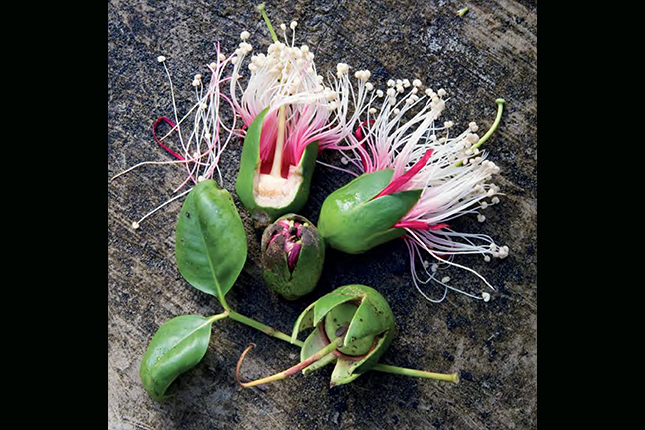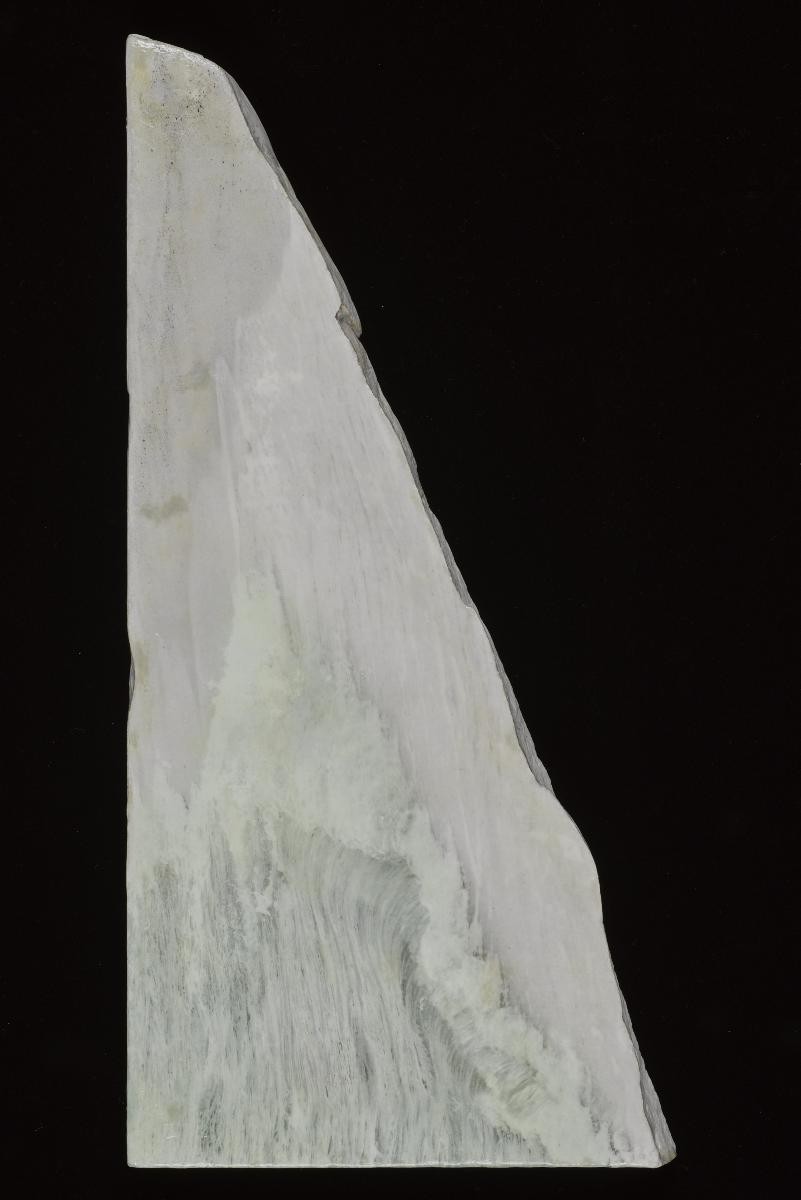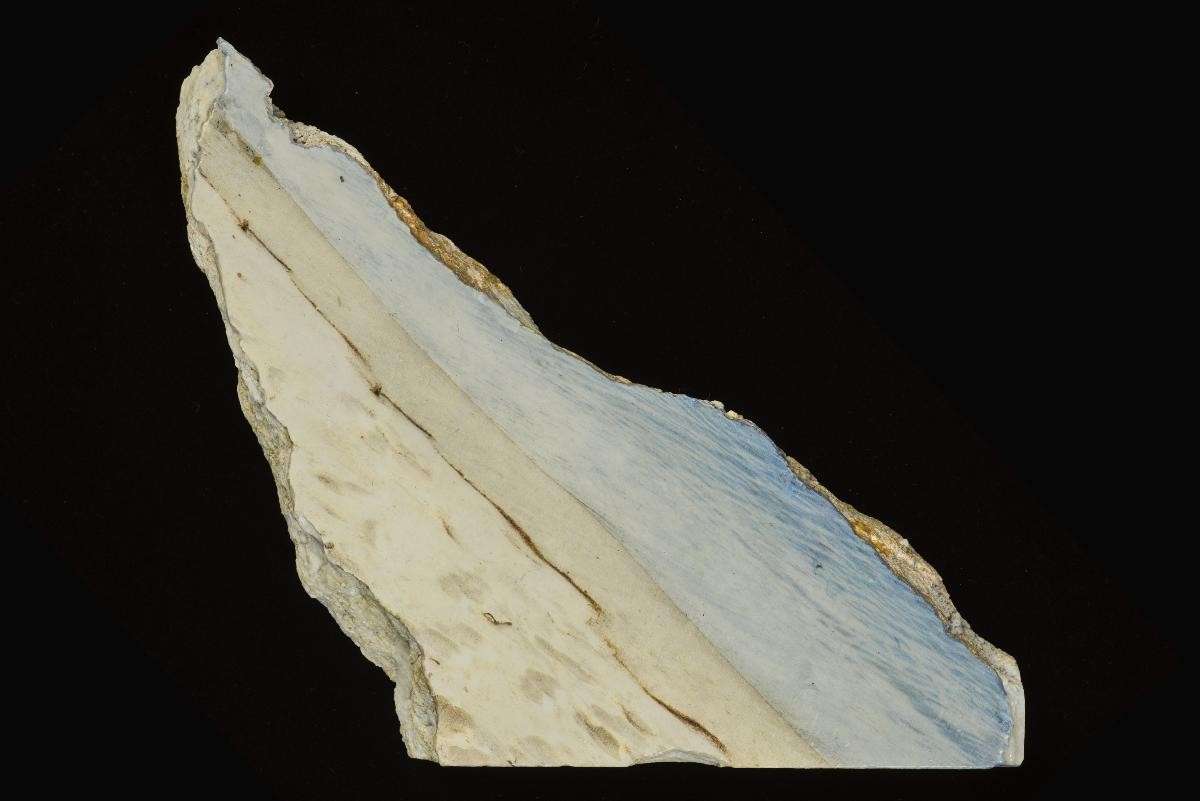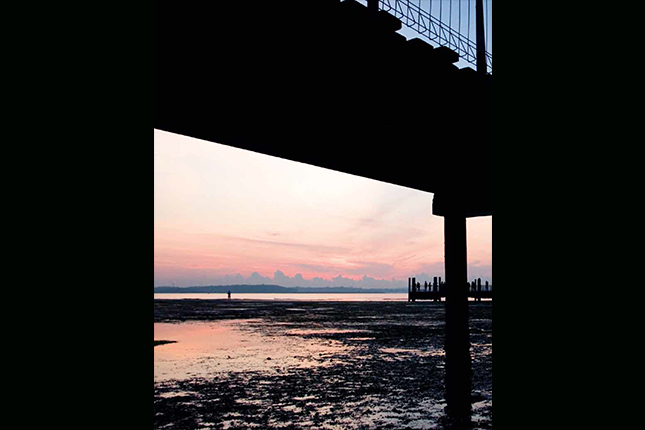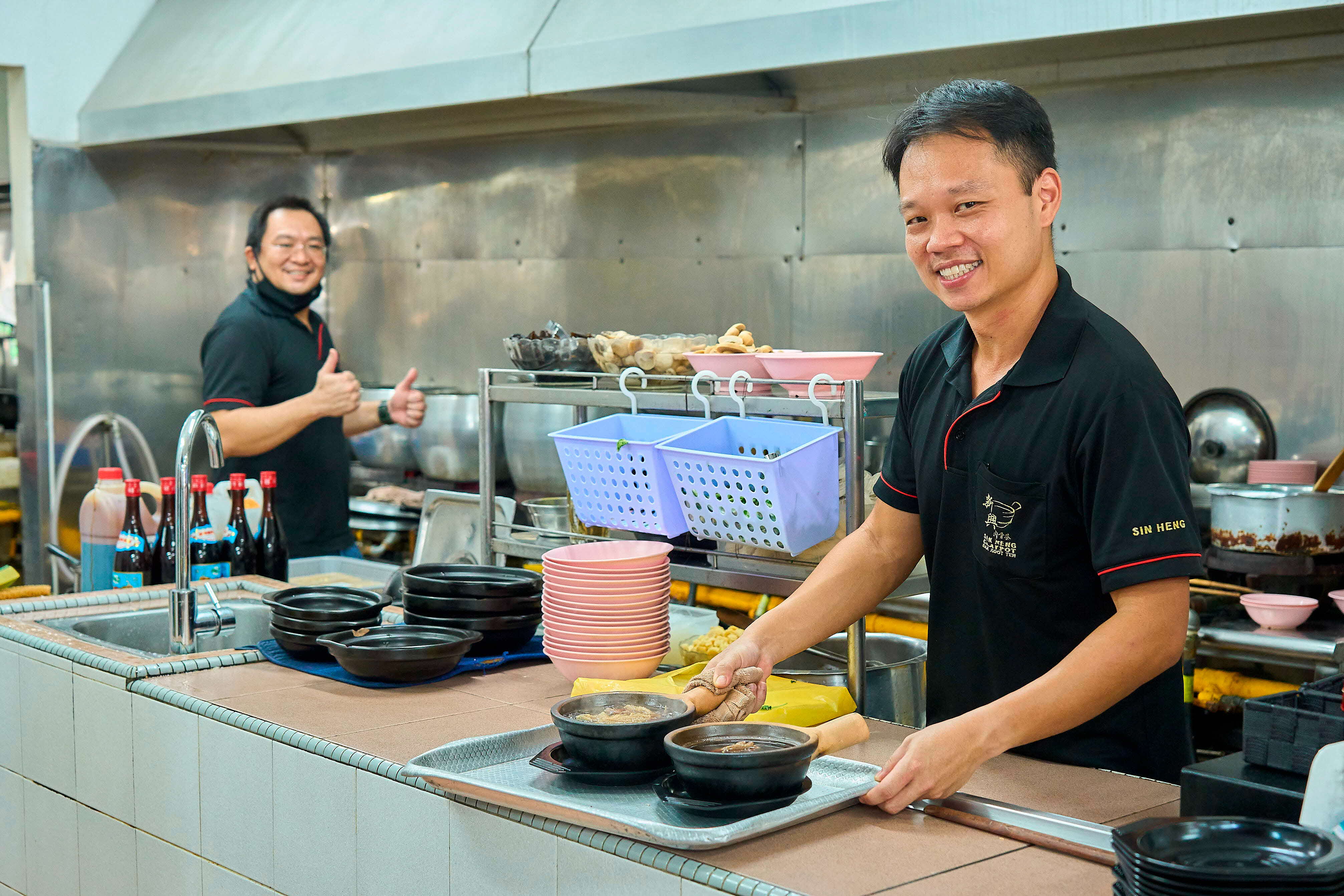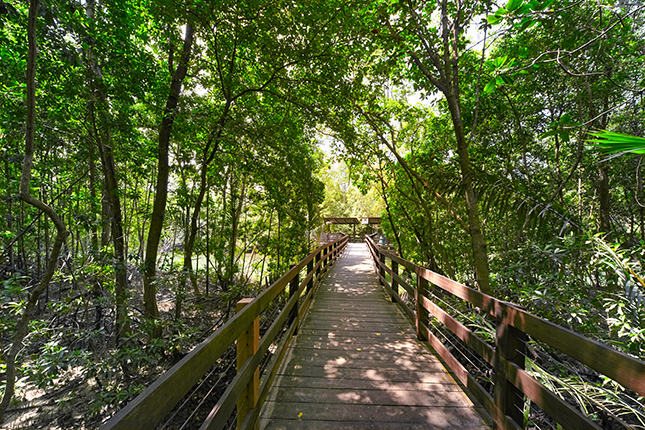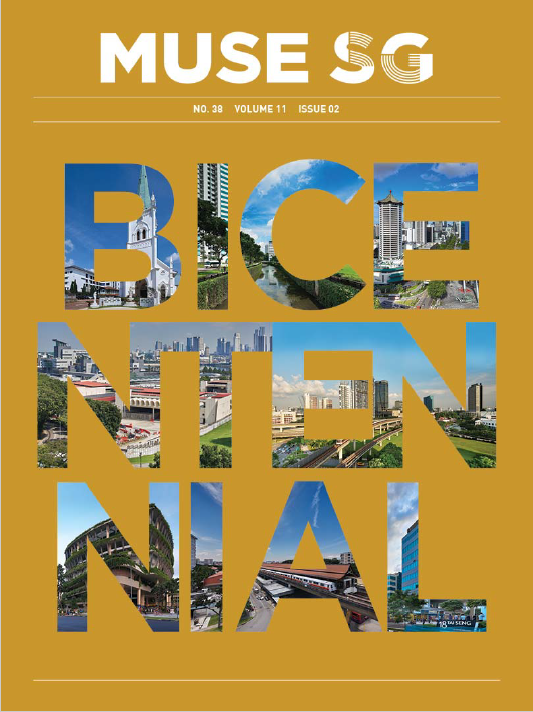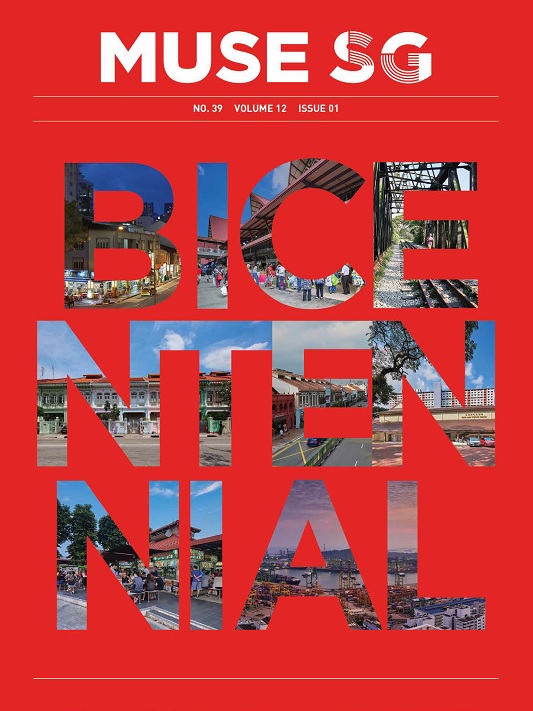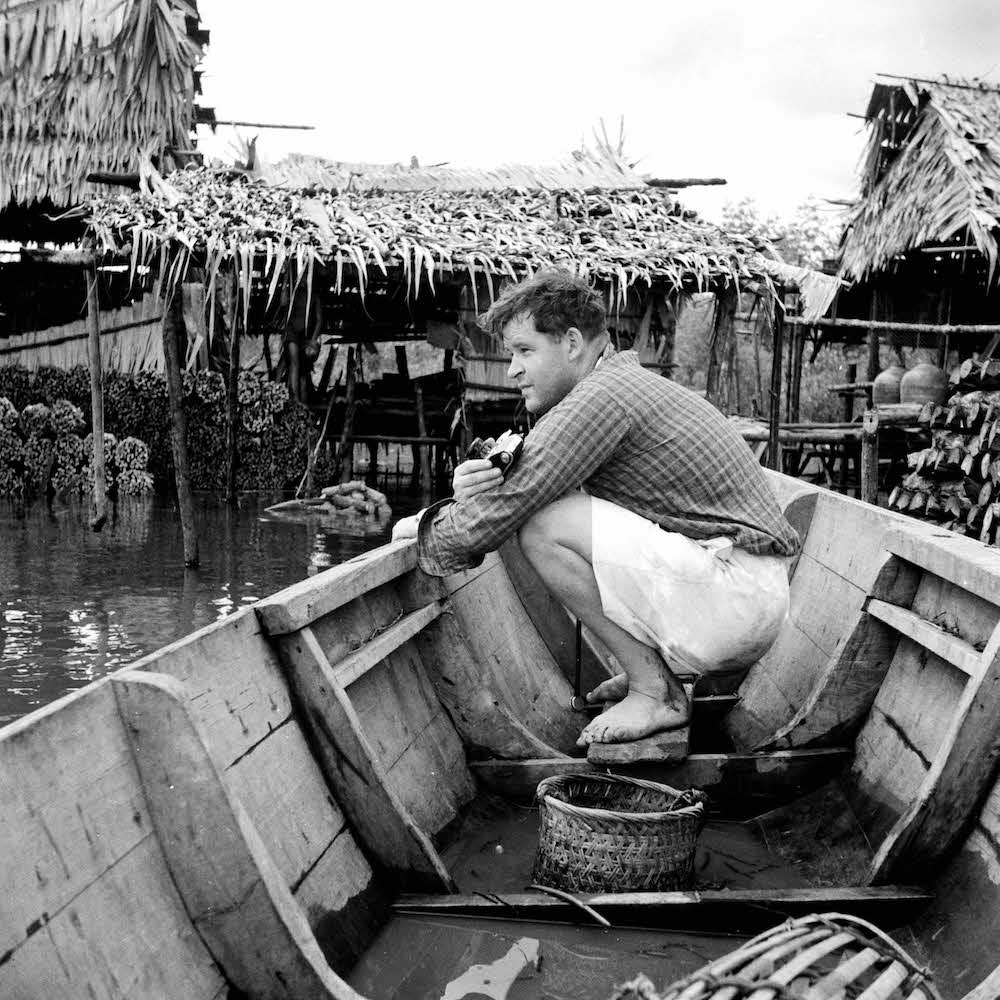By Jean Yong, Joanne Khew & Ng Yan Fei
Natural Sciences and Science Education Academic Group, National Institute of Education, Nanyang Technological University, Singapore
Images: Jean Yong, Ria Tan & Marcus Ng
BeMuse Volume 3 Issue 3 - Jul to Sep 2010
Mangrove forests are the “rainforests by the sea”. Found in the tropics, these forests, which grow at the interface between land and sea, consist of unique flora and fauna assemblages specially adapted to tolerate fluctuating salinities, muddy and anoxic soils1. In Singapore, the general public can get ‘up close’ to local mangroves in Pasir Ris Park, Pulau Ubin, Pulau Semakau and Sungei Buloh Wetlands Reserve, an ASEAN Heritage wetland site.
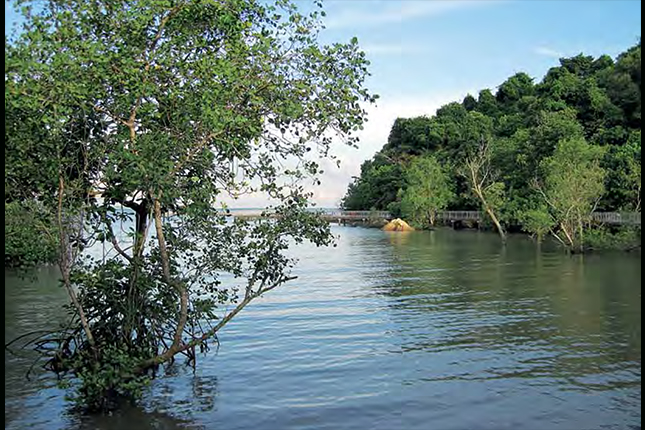 The mangrove forest - a unique ecosystem residing on the border of land and sea.
The mangrove forest - a unique ecosystem residing on the border of land and sea.
At first glance, walking through a place like Sungei Buloh Wetlands Reserve could lead to the mistaken conclusion that the biodiversity of mangrove forests is mainly restricted to homogenous trees and pesky mosquitoes. Cursory glances such as these have done little to promote the usefulness of mangrove forests and the rich biodiversity that lies beneath its deceptive exterior.
A Fragile Ecosystem
Throughout Singapore’s history, it has been unfortunate that few have had the foresight to see past the seemingly ‘dirty’ exterior of mangrove forests and have thus unfairly labelled them as wastelands.
Since the 1960s, coastal habitats including mangrove swamps have been cleared en masse for the construction of residential and commercial sites, prawn ponds and land reclamation. These unique habitats which are home to a myriad of organisms have also been used as sites where industrial effluents are discharged and solid and metallic anthropogenic wastes are dumped2, 3, 4. In 1820, one year after the founding of modern Singapore, mangrove swamps covered about 13% of Singapore’s fringe areas2. In 2010, these unique habitats represented less than 0.5% of Singapore’s land area, concentrated mainly along the northern fringes of the country2.
The mangrove forests which remain are often very small and severely fragmented. The mangrove forests of today are no longer large enough to support big carnivores such as the tiger, which could be seen freely roaming the island in the early 19th century. The patchy distribution of trees along the most seaward portion of the mangroves have also resulted in a large amount of tree-falls due to strong winds and the strong waves produced in the wake of large ships travelling near the mangrove forest2.
Small and fragmented mangrove forests do not bode well for the long-term sustainability of what is left of Singapore’s mangrove forests. Besides an increasing tree-fall rate, establishment of young mangrove trees has become increasingly difficult as there are less mature trees around to shield the young seedlings from strong waves that enter the mangrove forest during a rising tide. Should Singapore’s mangrove forest remain unprotected and unconserved, Singapore may be losing a portion of her mangrove forests every year, along with their unique biodiversity and invaluable environmental services.
Providing a Service to Mankind
Mangrove forests contain plants and animals which provide man with useful materials, food and valuable coastal protection. Even till today, entire coastal communities in countries such as Thailand can be sustained through reliance on mangrove forest products5.
Controlled burning of mangrove tree wood can also provide charcoal which has applications more widespread than just barbeque starting. Charcoal is highly absorbent and is widely used in removing bad odours from air and water and to absorb harmful gases in the stomach in the unfortunate case of diarrhoea or severe stomach aches6.
Many people would be surprised that the ubiquitous ‘atap-chee’ in Singapore’s beloved dessert – the ice kachang – is the seed of the Nipah, a palm tree that grows only in mangrove forests. The sugary sap from the stalk of the nipah inflorescence (or flower cluster) can also be used to make vinegar and palm sugar (Gula Melaka), while the large fronds can be weaved into anything from baskets to kampong house roofs6.
However, plants are not the only organisms in a mangrove forest with medicinal benefits. Haemocyanin in the blood of the horseshoe crab has been widely used by doctors as a diagnostic tool to detect harmful gram-negative bacteria6.
The mangrove forest is also a rich fishing ground that provides seafood ranging from the cheap to the very expensive (think of local delicacies such as drunken prawns and chilli crabs). Prawns from the family Penaeidae such as the tiger prawn as well as the mud crab (Scylla spp.) are common inhabitants of mangrove forests. They share a common home with other organisms like the flower crab (Portunus pelagicus), the Teochew vinegar crab (Episesarma spp.) and the sea hum or blood cockle (Anadara granosa) which provide humans with a diverse source of food.
The usefulness of mangrove forests does not stop at the organism level. The mangrove forest structure has been found to play an important economic role in aquaculture, sediment accretion, coastal protection, carbon sequestration and removal of toxic chemicals7-13. Collectively, the ecological services provided by mangrove forests can amount to about USD$1.6 billion per annum; and humans get it all for free13.
A team of scientists have found that the biomass of several commercially important species of fish was more than doubled when adult fish habitats in the sea were connected to mangroves10. It is also estimated that 80% of the world’s fish catch are directly or indirectly dependent on mangrove habitats as many fishes utilise mangrove swamps as nursery areas for their young7. The dense networks of mangrove roots serve as protected places where fish larvae can seek refuge from predators, giving them a better chance for survival.
The extensive roots of mangrove trees not only serve as a place of refuge for small nekton (swimming organisms) but also enable them to hold sediment and thus, prevent coastal erosion3. These roots also buffer nearby coastal communities from the full force of tidal waves during natural disasters such as tsunamis13, 14.
In lieu of the pressing need to abate global climate change, mangrove forests should not be sidelined for their ability to function as carbon sinks. A study on the carbon sequestering ability of mangrove forests in the Universiti Sains Malaysia has found that 4.5 million hectares of mangroves can absorb the carbon emissions of about five million cars6!
Furthermore, mangrove forests are nature’s ‘detoxification’ agents. Mangrove plants, have been reported to sequester toxic chemicals such as water-borne pollutants and heavy metals, and store them in aboveground biomass15, 16. The mangrove tree, Bruguiera gymnorhiza, is not only a pretty sight, but is able to bio-accumulate pyrene, while its ‘sister’ species, Bruguiera sexangula is able to absorb cadmium17. However, mangrove trees of the genus Bruguiera are not the only ones able to clean up the environment. On your next visit to Singapore’s mangrove forests, look out for Xylocarpus granatum. This mangrove tree with a ‘cannon-ball’ fruit is also a hyper-accumulator of pollutants including boron, iron, copper, manganese and zinc17.
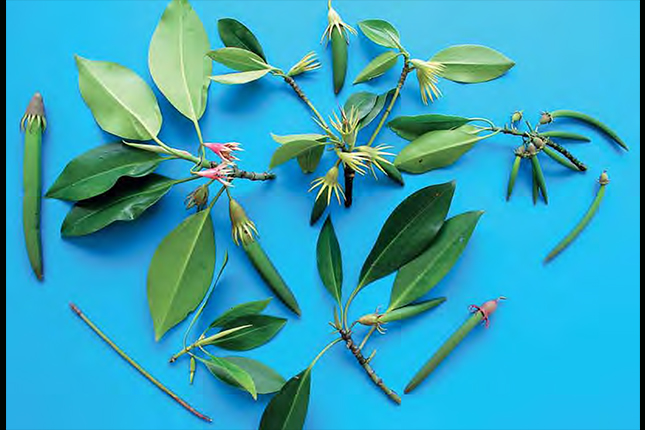 Bruguiera gymnorhiza, a mangrove plant that is more than just a pretty sight - it is able to absorb and accumulate pollutants from surrounding soils and water bodies.
Bruguiera gymnorhiza, a mangrove plant that is more than just a pretty sight - it is able to absorb and accumulate pollutants from surrounding soils and water bodies.
Photo: Jean Yong.
A Ray of Hope
Much has been said about the ecological services mangrove forests provide not only to humans but to the ecosystems connected directly and indirectly to it. As such, it would be in our best interest to halt the current continuing loss of Singapore’s mangrove forests.
Singapore’s mangroves can be preserved and even, encouraged to grow, should successful mangrove restoration schemes be put in place. However, mangrove restoration can be a notoriously challenging project especially if the restoration committee has not been properly trained in mangrove management practices such as mangrove zonation.
Despite the small land area of Singapore’s mangroves, the mangrove forest can be roughly divided into different zones with distinct plant species found at different areas in the forest. For example, plants from the Ceriops genus can be found closer to the land while mangrove trees from the genus Rhizophora are more suited for life near the open ocean18. In the past, mangrove restoration projects in various countries made the mistake of planting incorrect mangrove plants in the different zones of the mangrove forest, resulting in much preventable plant death and a loss of capital.
However, there have been shining examples of successful mangrove restoration efforts on Singapore’s own shores. Restoration of mangrove forests at Sungei Api Api in Tampines and on Pulau Semakau have resulted in a more robust mangrove ecosystem in these two locations (see “Turning the Tides for Singapore’s Mangroves”).
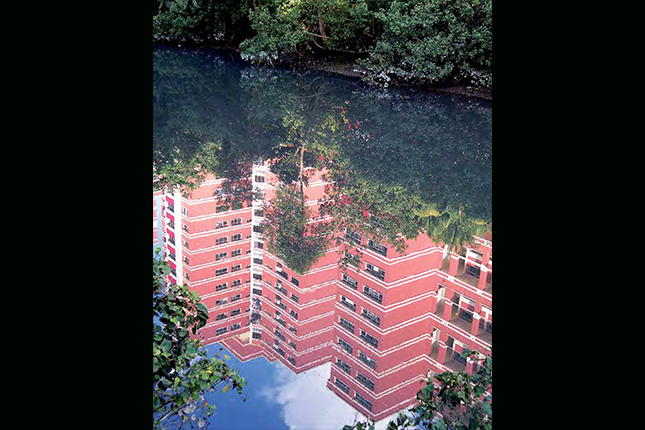 Sungei Api Api mangroves.
Sungei Api Api mangroves.
Photo: Ria Tan.
To aid in educating future mangrove conservationists on the importance of recognising the species of mangrove plants best suited for life in the different mangrove zones, the National Institute of Education’s National Sciences and Science Education Academic Group has produced a Comparative Mangrove Guide Sheet (see fig. 9).
This guide sheet, coupled with continuous mangrove research contributions and educational outreach programmes could help increase the current understanding of Singapore’s mangroves in terms of its ecology, biodiversity and conservation needs.
The purpose of education on mangrove biology is however not merely restricted to conservation needs. The recent discovery of two rare mangrove species in Singapore highlights the importance of education in the area of mangrove biodiversity. Without prior knowledge of what kind of plants can be found in Singapore’s mangrove forests, these two new species (and many more in the future) might just have gone un-noticed!
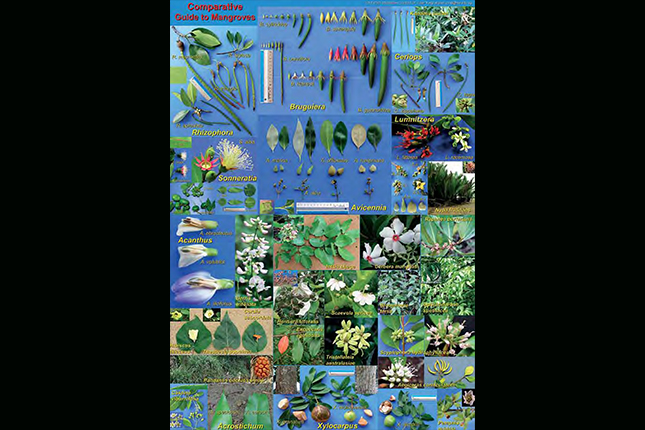 A comparative mangrove guide-sheet would allow easier identification of mangrove plants in the field. The purpose of education on mangrove biology is however not merely restricted to conservation needs. The recent discovery of two rare mangrove species in Singapore highlights the importance of education in the area of mangrove biodiversity. Without prior knowledge of what kind of plants can be found in Singapore’s mangrove forests, these two new species (and many more in the future) might just have gone un-noticed!
A comparative mangrove guide-sheet would allow easier identification of mangrove plants in the field. The purpose of education on mangrove biology is however not merely restricted to conservation needs. The recent discovery of two rare mangrove species in Singapore highlights the importance of education in the area of mangrove biodiversity. Without prior knowledge of what kind of plants can be found in Singapore’s mangrove forests, these two new species (and many more in the future) might just have gone un-noticed!
Photo: Jean Yong.
Careful morphological and chromosomal analyses revealed that the local Kandelia candel (a small tree called Pisang Pisang) is of a distinct species from other Kandelia species found in East Asia. As such, the plants of these species were renamed Kandelia obovata Sheue, Liu & Yong; adding another new species to Singapore’s mangrove record. Another cause for celebration would be the discovery of the last two Bruguiera hainesii in June 2003. These two plants were found in Sungei Loyang and Sungei Jelutong (Pulau Ubin) respectively. Although shining a ray of hope into the plight of Singapore’s mangrove ecosystem, these findings serve to highlight the vast amount of biodiversity remaining in Singapore’s mangrove forest which need our protection. If nothing is done to conserve the little of what remains of Singapore’s mangroves, the rich biodiversity and natural heritage within these truly amazing habitats might soon become a thing of the past.
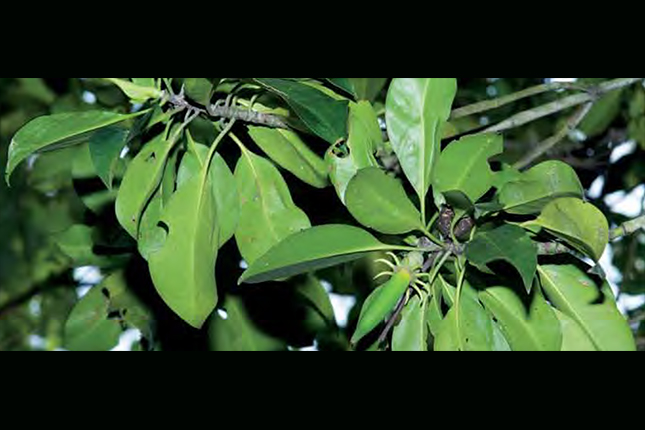 The foliage and fruit of the Bruguiera hainesii mangrove tree.
The foliage and fruit of the Bruguiera hainesii mangrove tree.
Photo: Jean Yong.
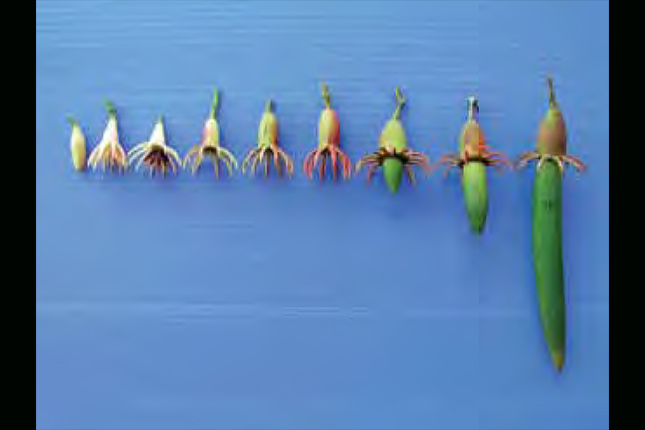 Propagules (fruits) of Bruguiera hainesii at different stages of maturation.
Propagules (fruits) of Bruguiera hainesii at different stages of maturation.
Photo: Jean Yong.
Turning the tide for Singapore's Mangroves
In recent decades, Singapore’s remaining mangrove habitats have enjoyed a reprieve of sorts after earlier decades of retreat. This hopeful trend arose as both citizens and the government came to see and appreciate the role of mangrove forests as natural habitats that deliver vital ecological services as well as contribute to education, tourism and enhancing the quality of life and leisure in a largely urban city-state.
One of the earliest results of this drive to find a balance between development and conservation was Sungei Buloh Wetland Reserve. This wetland of old prawn ponds surrounded by rich mangroves was discovered to be a haven for migratory shorebirds by nature lovers in 1986, and following a proposal to conserve the area, the Parks & Recreation Department (the precursor to the National Parks Board) took over the development and management of the wetlands, which was officially opened by then-Prime Minister Goh Chok Tong on 6 December 1993. Sungei Buloh was later gazetted as a nature reserve in 2001 and was named Singapore’s ASEAN Heritage Park in 2003 as a protected area of high conservation value.
A lush mangrove forest is also among the highlights of Chek Jawa Wetlands at the eastern tip of Pulau Ubin. Originally slated for urban development, this coastal wetland was revealed to be a biodiverse mix of habitats for many rare plants and animals following surveys by the Raffles Museum of Biodiversity Research. Thousands of Singaporeans subsequently visited the shore and this led to calls to preserve Chek Jawa. As the land was not urgently required for development, the Ministry of National Development announced a 10-year deferment of land reclamation at Chek Jawa in January 2002 and the National Parks Board opened in July 2007 the Chek Jawa Wetlands which features a coastal boardwalk, viewing tower and visitor centre in a historic Tudor cottage originally built in 1930s by the Chief Surveyor of Ubin, Langdon Williams.
Meanwhile, residents of Tampines and Pasir Ris get to enjoy mangroves almost at their doorstep, thanks to an initiative by the National Parks Board to preserve a 5 ha patch of mangrove around Sungei Tampines and Sungei Api Api, where a successful mangrove regeneration project began in the early 1990s.
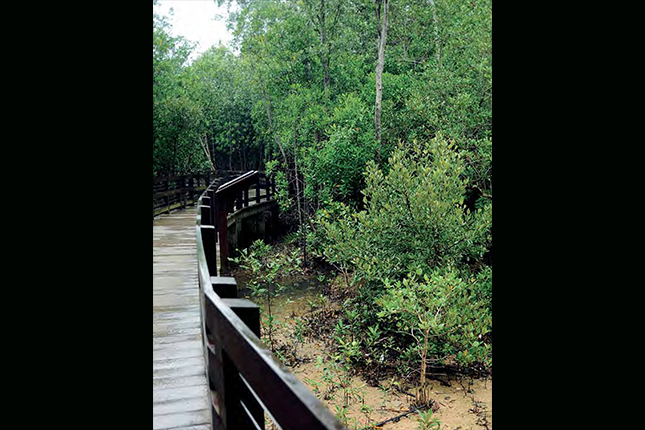 Mangrove boardwalk at Pasir Ris Park (where Tampines is).
Mangrove boardwalk at Pasir Ris Park (where Tampines is).
Photo: Ria Tan.
The lessons from this project were later translated to Pulau Semakau in the Southern Islands, where the National Environment Agency operates an offshore land fill that doubles as a nature destination, thanks to an effort to replant two plots of mangroves that had to be removed during the construction of the land ll. Today, Pulau Semakau continues to harbour thriving mangroves and reef flats with abundant bird life and marine creatures.




